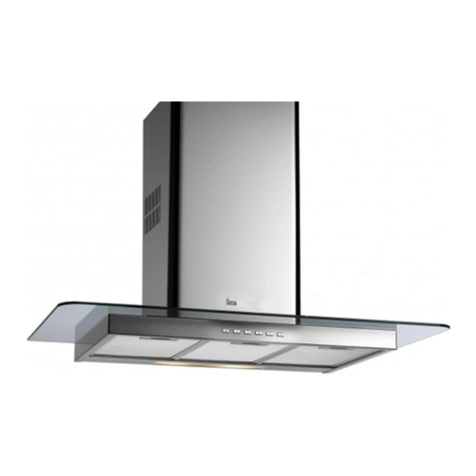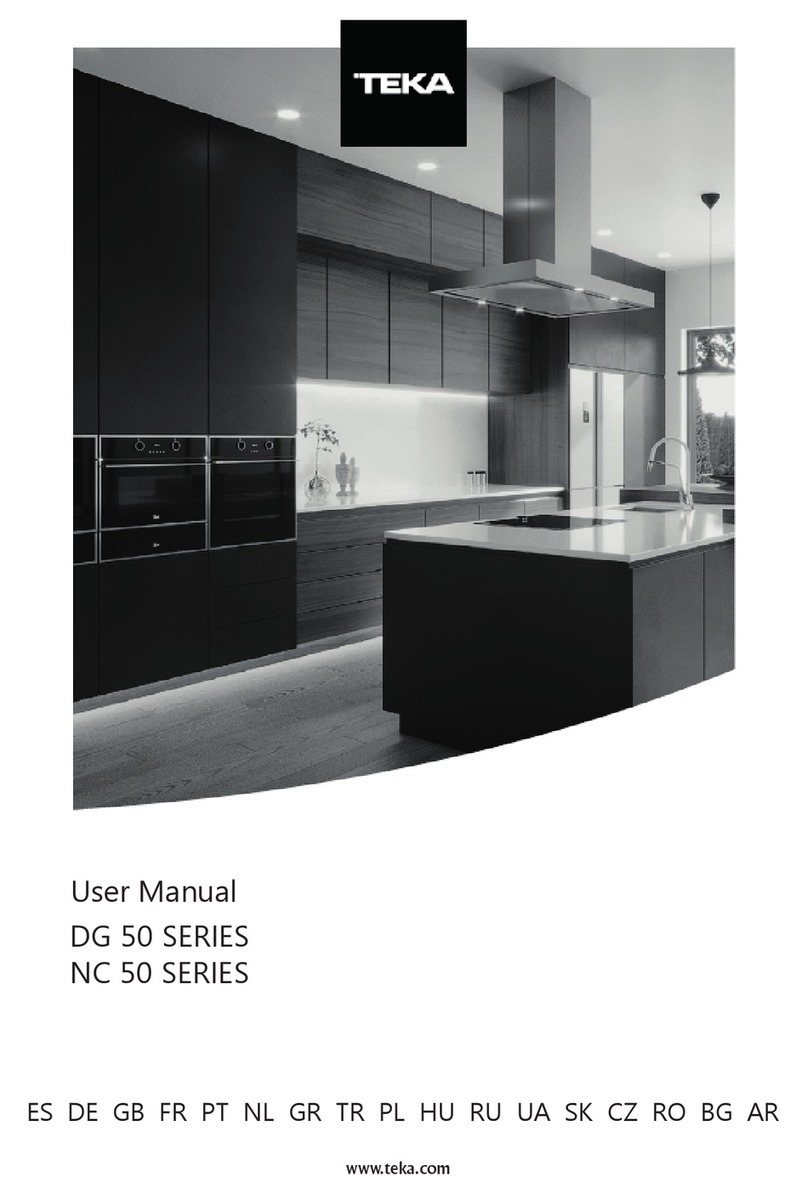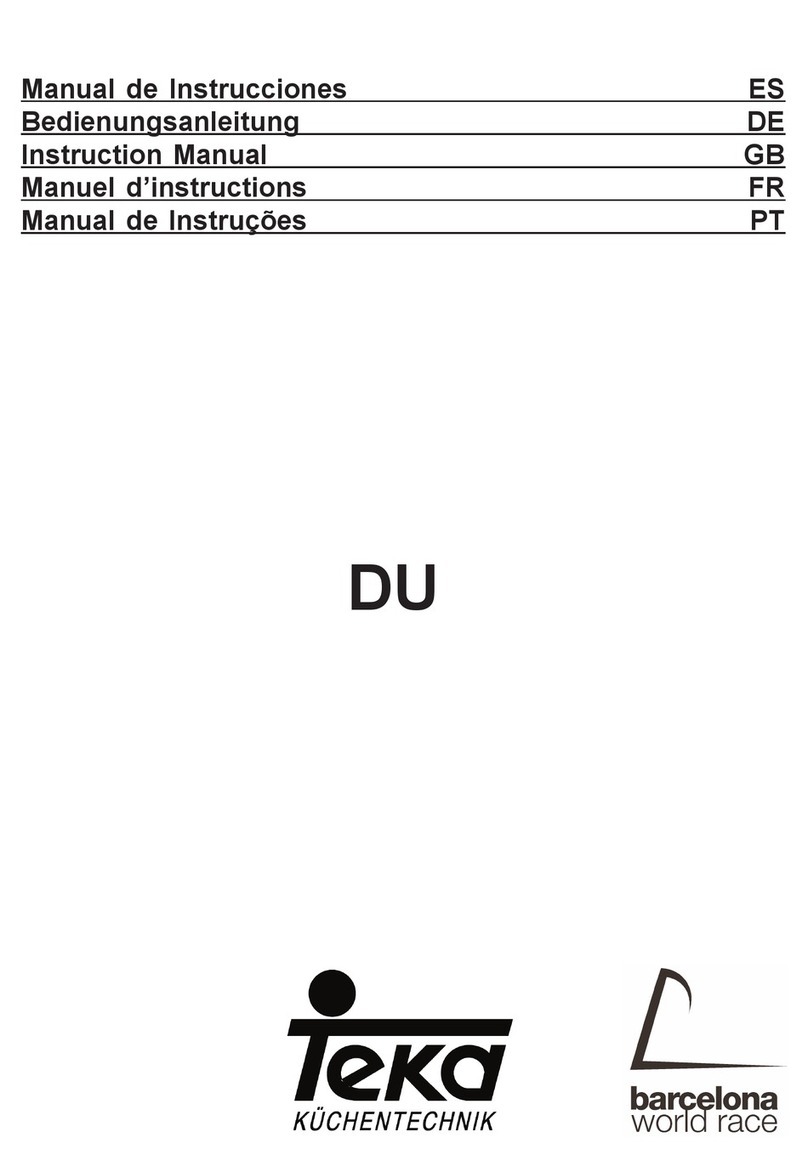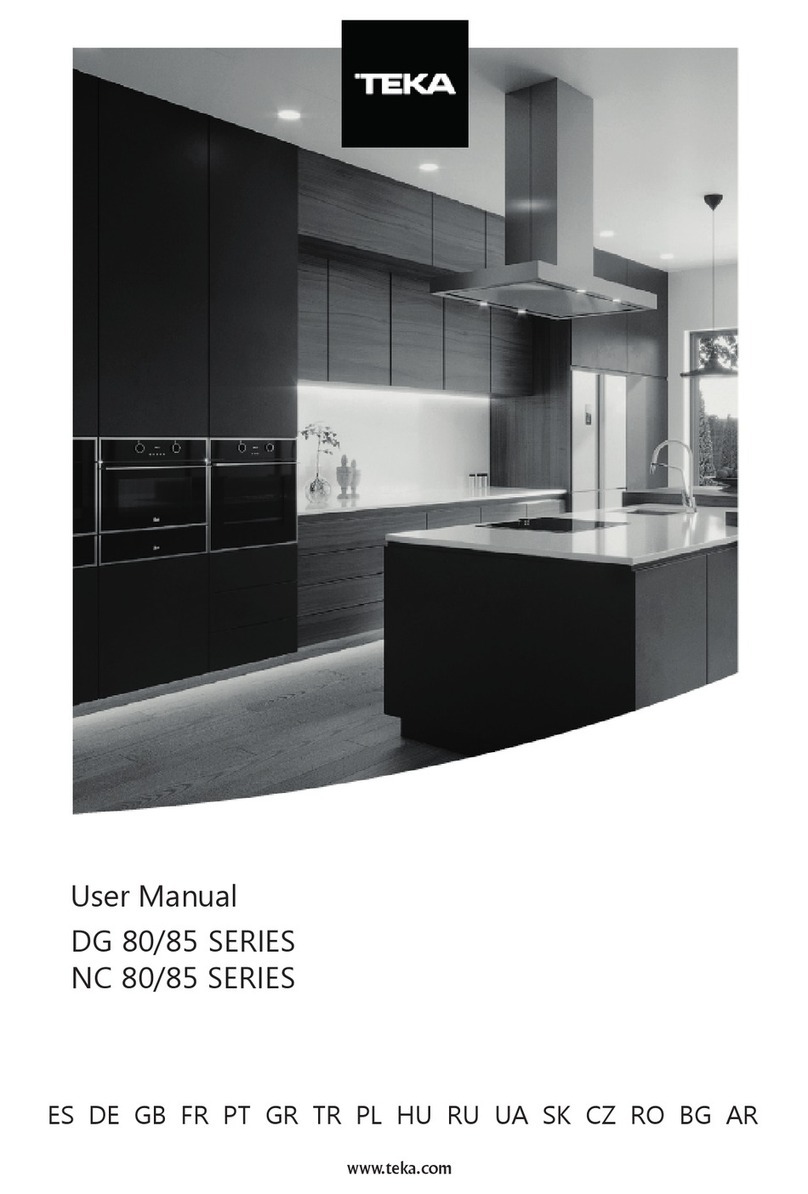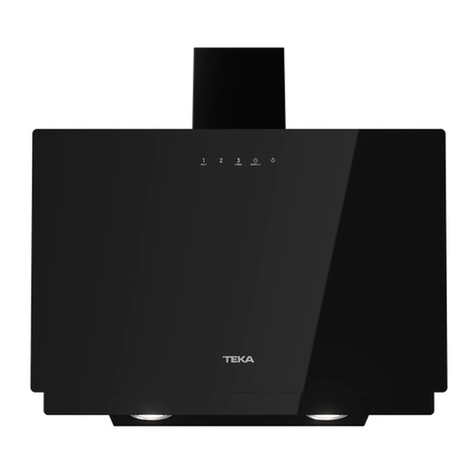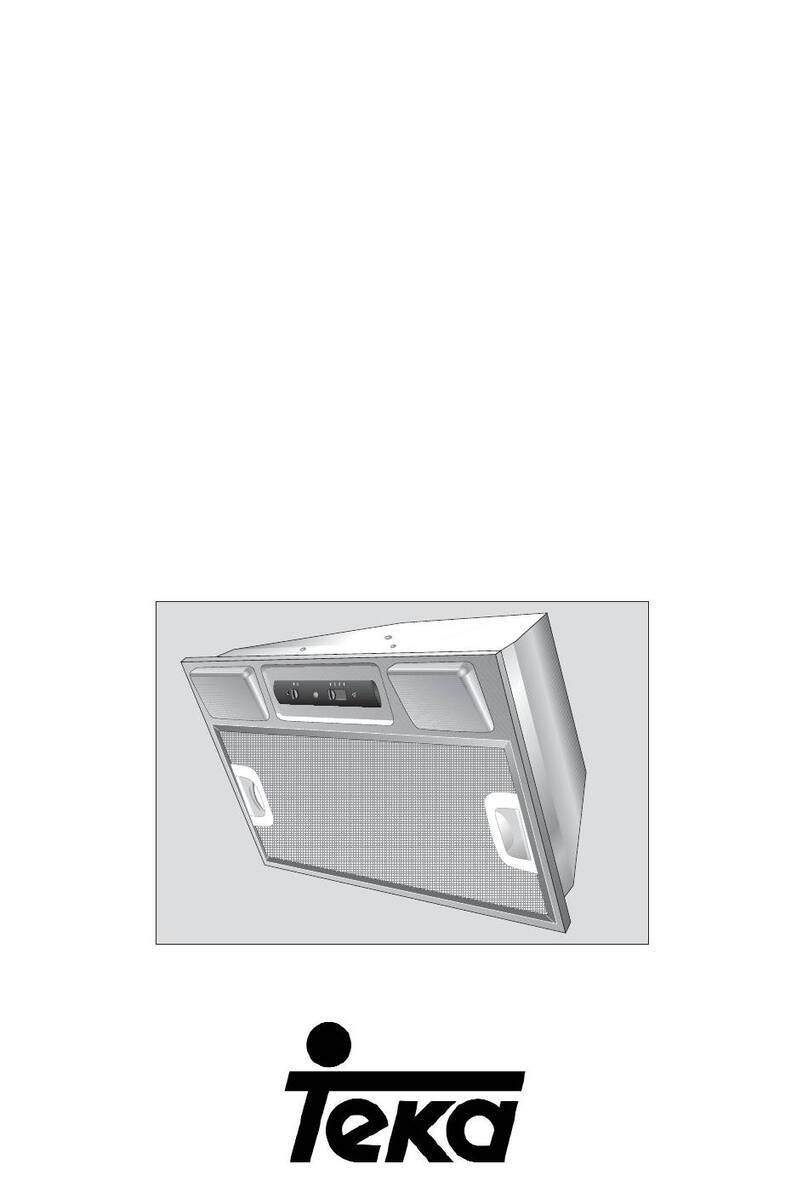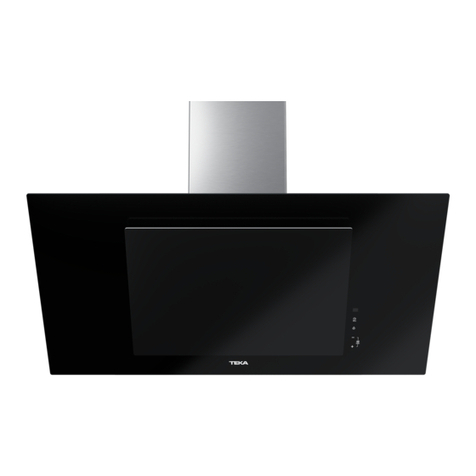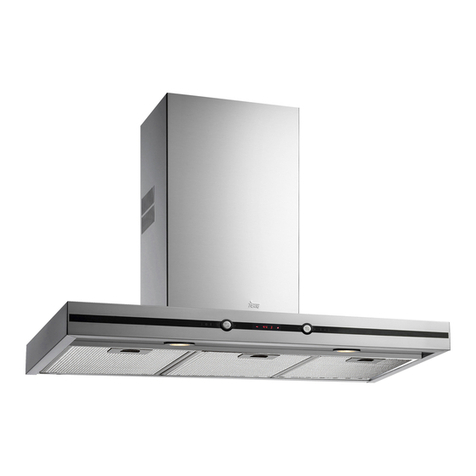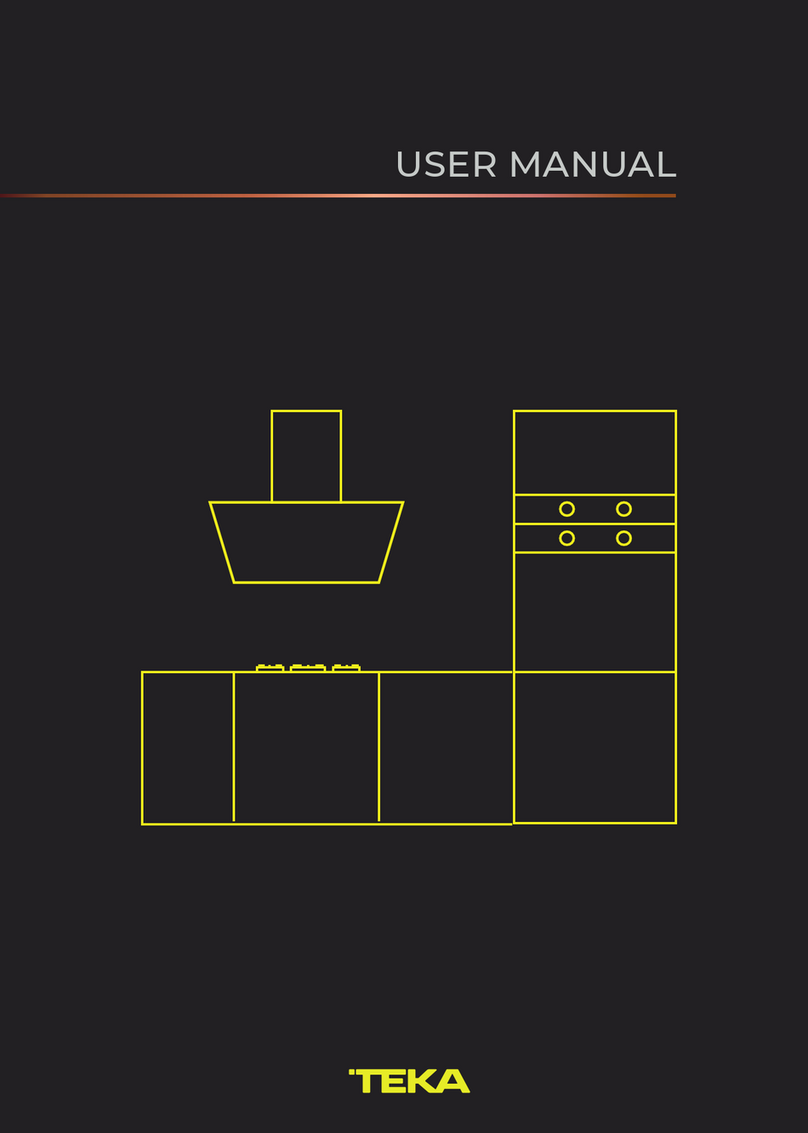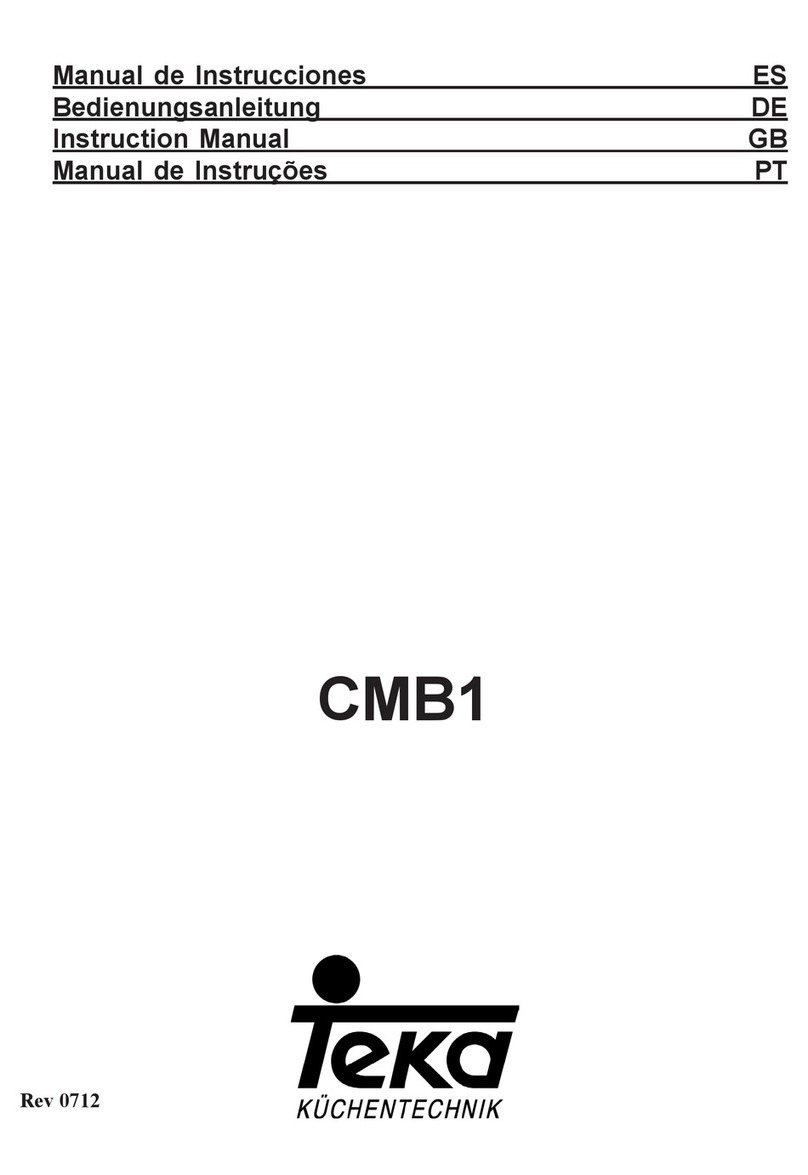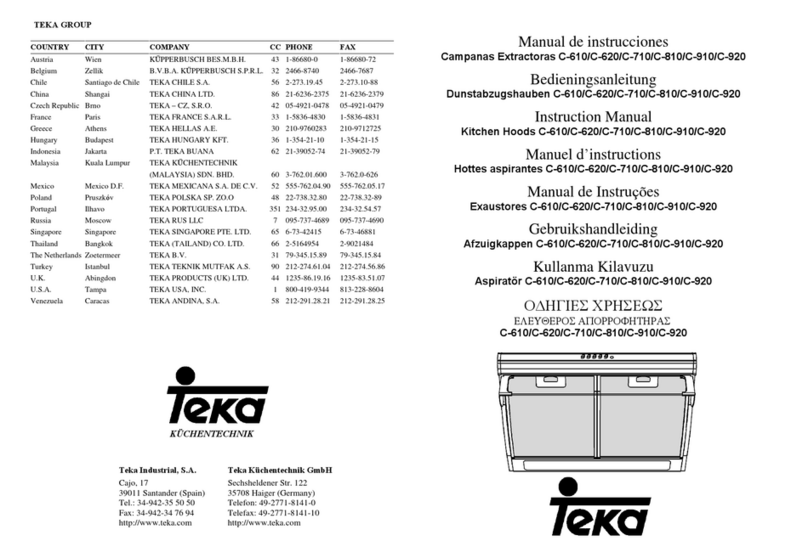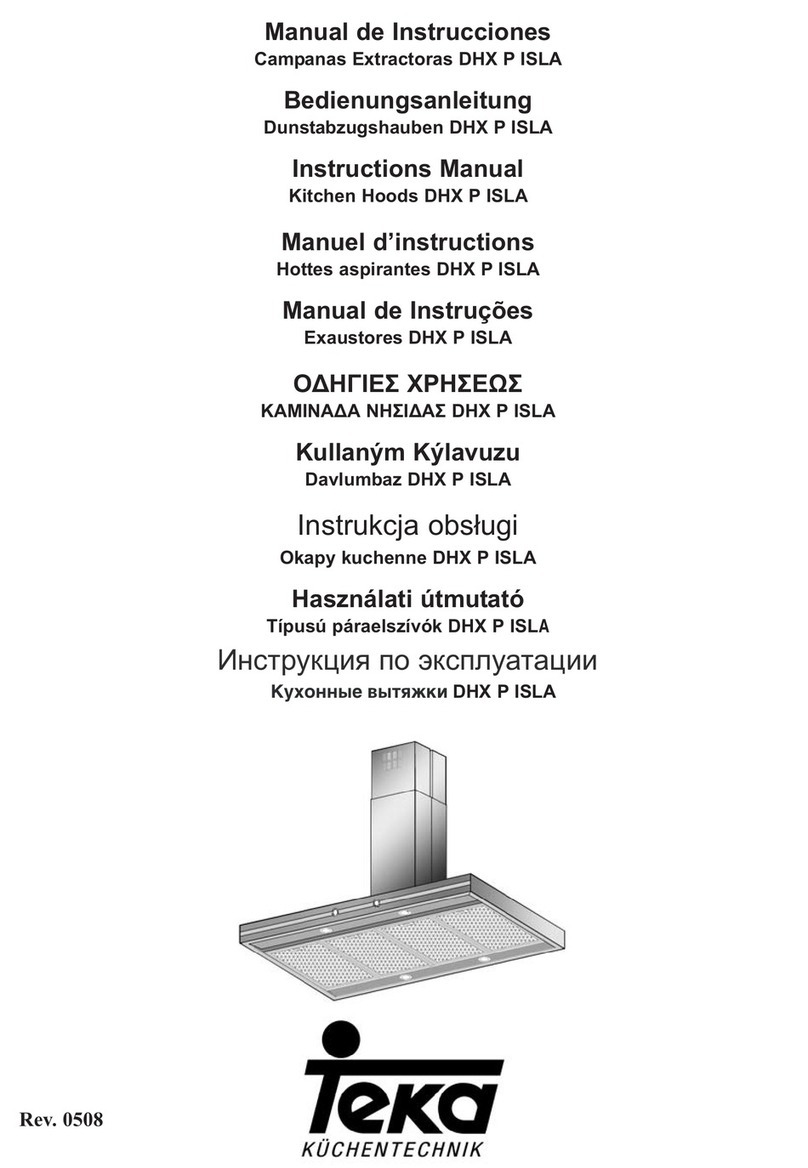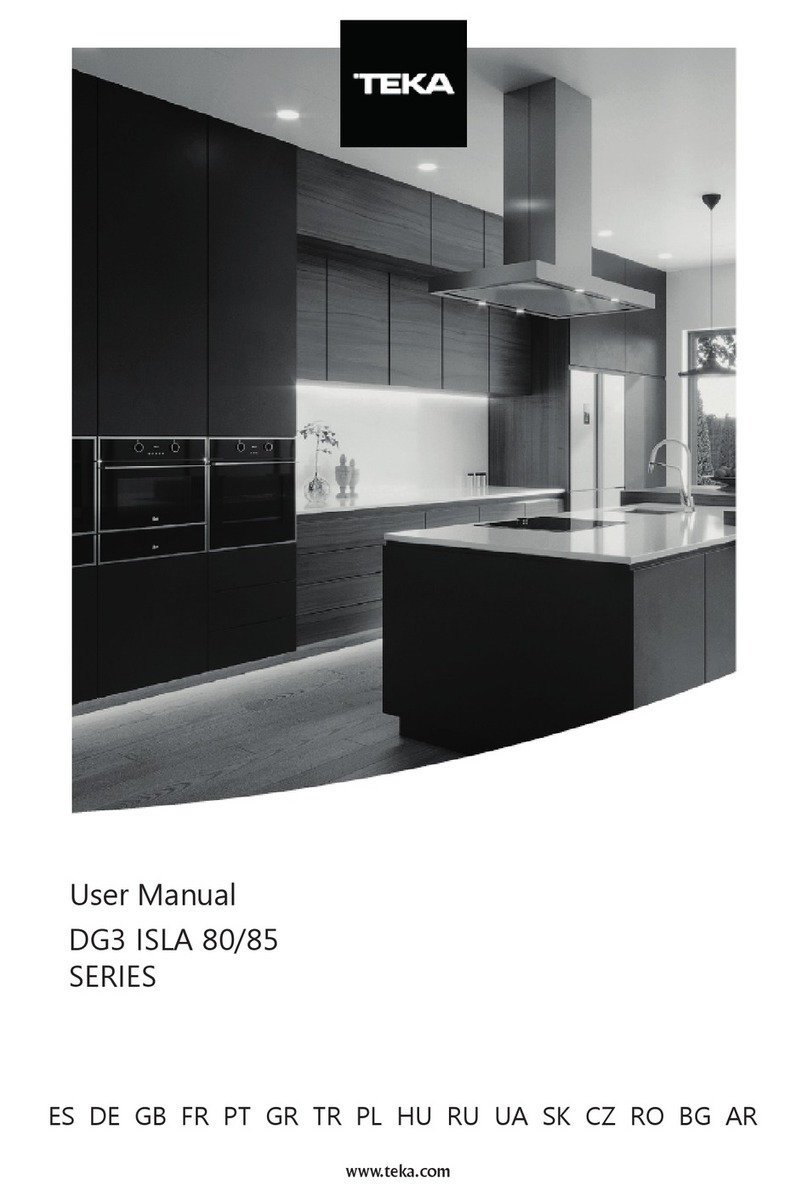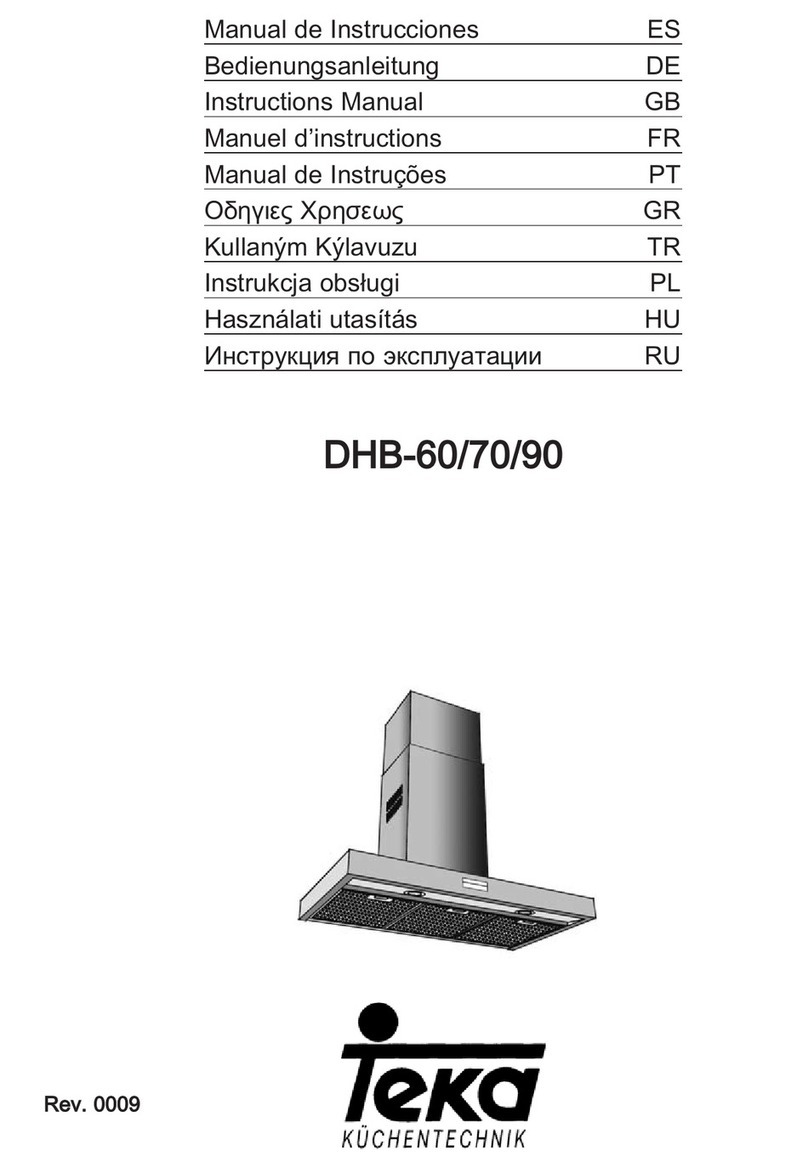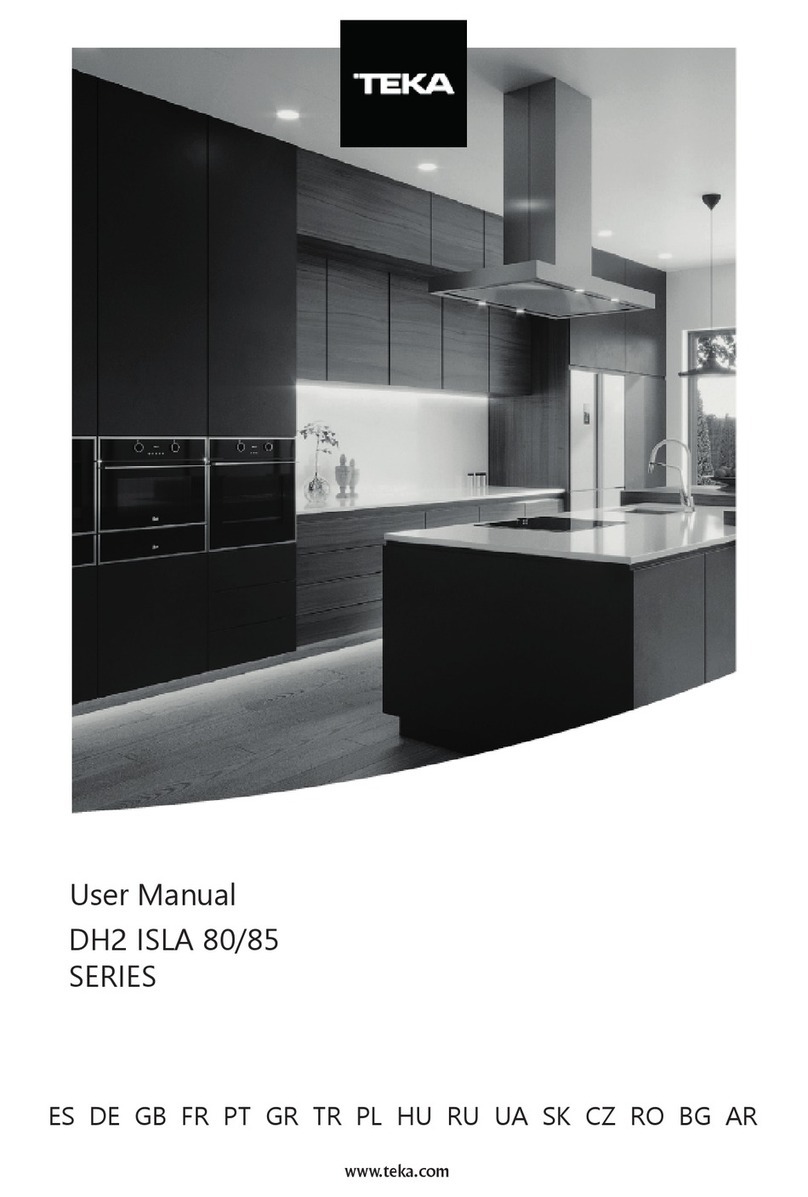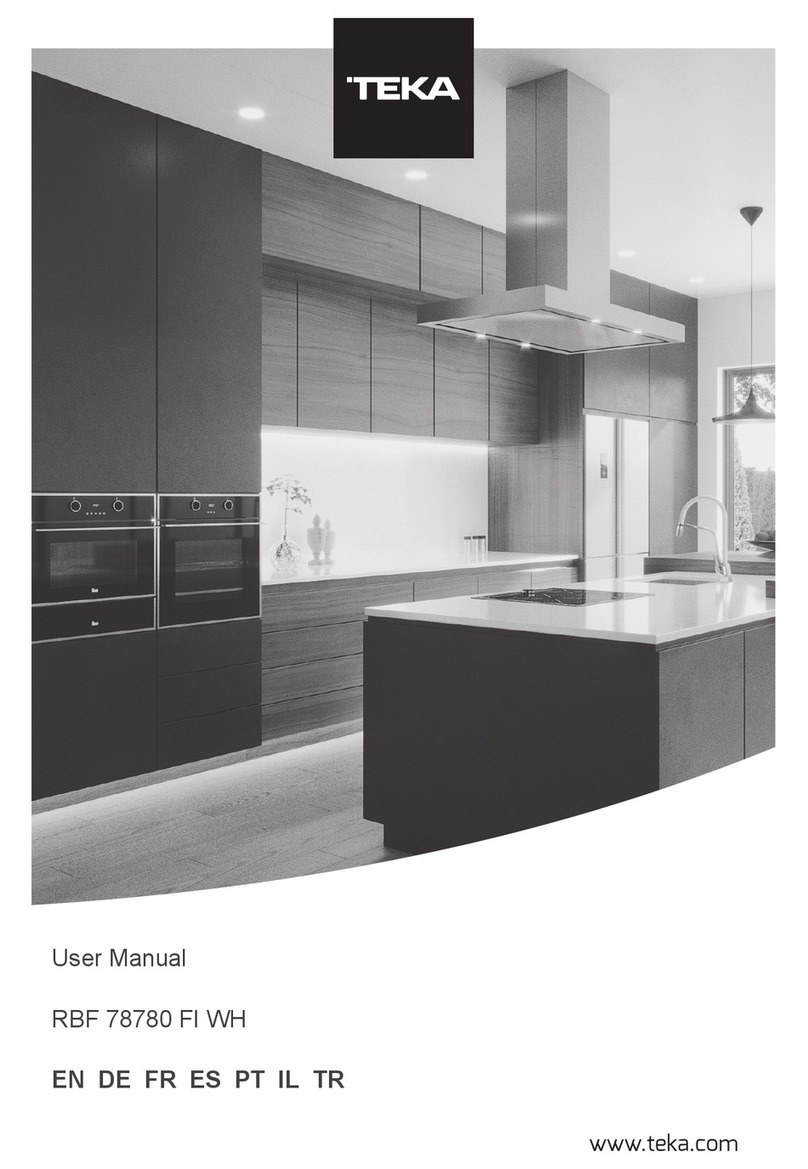2
Gea-Top/001
Szanowni Państwo!
Serdecznie gratulujemy trafnego wyboru.
Jesteśmy przekonani, że nowoczesne,
funkcjonalne i praktyczne urządzenie,
wyprodukowane z najwyższej jakości materiałów,
spełni wszystkie Wasze wymagania.
Prosimy o uważne zapoznanie sięz treścią
instrukcji obsługi przed pierwszym użyciem
urządzenia aby maksymalnie wykorzystaćjego
możliwości oraz uniknąć uszkodzeń
spowodowanych niewłaściwym użytkowaniem.
Instrukcji obsługi nie należy niszczyć, ponieważ
wskazówki eksploatacyjne i dane w niej zawarte
mogąsięprzydaćw późniejszej eksploatacji.
Istotne informacje
•Prace instalacyjne mogąbyćprowadzone
wyłącznie przez uprawnione osoby zgodnie z
niniejsząinstrukcją.
•Należy przestrzegaćobowiązujących
przepisów dotyczących instalacji urządzeń
elektrycznych i wentylacyjnych.
•Przed przyłączeniem urządzeńdo instalacji
elektrycznej należy sprawdzićzgodność
napięcia i częstotliwości z danymi na tabliczce
znamionowej. Wyciąg powinien być
podłączony do gniazdka z uziemieniem.
•Wyciąg powinien byćpodłączony tak, aby
kabel główny nie dotykałżadnych metalowych
powierzchni.
•Nie należy odprowadzaćoparów przewodami
oddymiającymi, które służą do odprowadzania
spalin urządzeńnie zasilanych energią
elektryczną.
•Z uwagi na gromadzący siętłuszcz na filtrach
metalowych i wnętrzu obudowy wyciągu
istnieje niebezpieczeństwo jego samozapłonu.
Dlatego filtry i obudowęnależy regularnie
czyścić(co najmniej raz w miesiącu).
•Dolna powierzchnia wyciągu powinna
znajdowaćsięco najmniej 50 cm nad
palnikami elektrycznymi lub 65 cm nad
palnikami gazowymi.
•Nie pozostawiaćpalących siępalników
ewentualnie włączonych pól grzejnych bez
stojących na nich naczyń. Wysoka tempera-
tura może uszkodzićwyciąg i/lub spowodować
pożar.
•Nie wolno gotowaći smażyćpod wyciągiem
bez zamontowanych filtrów.
•Nie wolno przygotowywaćpod wyciągiem tzw.
płonących potraw. Otwarty ogieńmoże
uszkodzićwyciąg i/lub spowodowaćpożar.
•Urządzenie jest przeznaczone do użytku
domowego i nie może byćużywane do innych
celów.
•Nie wolno używaćurządzenia w przypadku
widocznego uszkodzenia przewodu
elektrycznego lub teżsamego urządzenia. W
przypadku uszkodzenia urządzenia należy je
niezwłocznie wyłączyći zawiadomićnajbliższy
punkt serwisowy. W żadnym wypadku nie
podejmowaćsamodzielnych prób naprawy.
Używaćwyłącznie oryginalnych części
zamiennych. Naprawy dokonane przez osoby
nieuprawnione mogąspowodować
uszkodzenie urządzenia lub zakłócićjego
eksploatację.
PL






